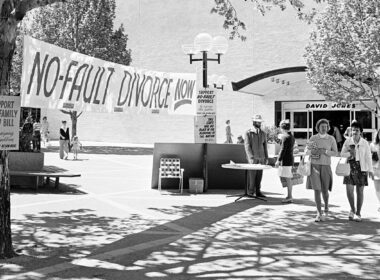The physical and mental response that your brain develops when it faces prolonged bullying comes pretty close to a trauma response.
Forget broken power cords – bullying is the biggest workplace hazard for lawyers. In this exclusive investigation, real lawyers share their harrowing experiences of micro-management, harassment, humiliation, name-calling, verbal abuse and even physical assault.
“I can’t really think of a time during my four years in [a top-tier law firm] where I or someone I knew was not being bullied.”
A former summer clerk and graduate lawyer at one of Australia’s “Big Six” law firms offers this grim reflection on her short-lived career in the firm’s Sydney office between 2008 and 2012.
We won’t name the firm in this story – not only for legal reasons, but because it is the type of story that has been repeated to LSJ by several current and former lawyers in multiple firms and legal workplaces around Australia. Singling one out would seem prejudicial in a profession that is, apparently, rife with bullying behaviour.
During her four years at this firm, Jess* was overworked, micro-managed, yelled at, sworn at in front of colleagues and clients, admonished via group email chains, harassed, deliberately isolated from her peers, and even physically assaulted.
“A partner picked up one of those big plastic lever-arch files and threw it at me, yelling, ‘Get the f*ck out’,” she recalls. “I put my hands up to stop the folder hitting my face and the plastic side of the file slashed my wrists and the side of my cheek. I still have a 30cm scar across my wrists.”
The same partner didn’t blink when a junior solicitor fainted in the hallway outside his office. Surrounding colleagues saw him step right over her, loudly declaring, “I’m not a first aid officer!” Other partners publicly lauded the billing records of a senior associate who had charged for 20 hours on Christmas day. They told summer clerks – Jess being one of them – that was what they should aim for.
Jess describes enduring a “hazing period”, during which the young women were “tested” with sexual harassment, taunts and grim tasks. She and another female graduate were given a discovery task that forced them to review extreme porn – including bestiality and worse – for three weeks straight.
“When you’re doing junior tasks like discovery or due diligence, it is relatively common for porn to come up. Lots of people have it on their devices and I thought this was normal for a litigation matter,” she says. “That was until I asked a couple of friends if they had to do the same thing. Some of my female friends said yes. None of the men had to.
“I spoke to one of the senior associates and she basically told me to ‘suck it up, princess’. The attitude was: ‘This is what it’s like in law firms, this is the job. If you can’t handle it, you should consider a different career.’”
How big a problem is this, really?
Statistically speaking, Jess’ story is not unique.
A 2016 study by SafeWork Australia found that approximately 10 per cent of the Australian adult workforce had experienced bullying at work in the past year. The Productivity Commission in 2010 estimated that workplace bullying costs our economy up to $36 billion annually.
But while most readers might expect lawyers to report experiencing bullying at lower rates, given their years of legal training and familiarity with employment law, new research by the International Bar Association (IBA) has found the opposite is true.
In May 2019, the IBA released the results of the largest-ever global study on bullying and sexual harassment among lawyers. The research surveyed 7,000 lawyers in 135 countries and opened the legal world’s eyes to the shocking extent of bullying in a profession tasked with upholding equality and justice for all.
As many as one in two female respondents and one in three male respondents reported experiencing bullying at work – an average across both genders of 38 per cent.
“This is a clarion wake-up call for the legal profession about a problem we need to address,” CEO of the Law Society of NSW Michael Tidball told LSJ at the time. “It goes to the heart of everyone being treated equally by the law and before the law.”
While sexual harassment has recently catapulted to the front of legal human resources agendas, fuelled by campaigns like #MeToo, #TimesUp and the Australian Human Rights Commission’s National Inquiry into Sexual Harassment in Workplaces, there seems to be less of a focus on bullying. This is despite it touching a greater proportion of lawyers, according to the IBA survey, and affecting both women and men in roughly equal numbers.
 Leesa Morris, forensic psychologist
Leesa Morris, forensic psychologist
How bad can it get?
At one point during her time at the top-tier firm, Jess went to human resources to ask if they would move her off a sexual harassment matter that her team was working on. She had been a victim of sexual assault when she was younger and found the material traumatic.
“I remember the day I finally went above my partner to HR, to ask about being moved off the case. It sticks in my mind because the head of HR had a big suicide prevention file on her desk, with information on how to protect mental health among lawyers,” recalls Jess.
“I came to her to tell her I had been sexually assaulted and I wasn’t coping. Her solution was to move me to an entirely different floor, where I had to do discovery on my own for a separate team. She may as well have said, ‘Oh, sorry you were raped. We’re just going to send you down to the loading dock to be alone.’ It was such an impressive juxtaposition.”
Jess says the firm prided itself on “typical corporate rhetoric” about good mental health – but the lack of an adequate response in her case sent a louder message. Too many lawyers shared similar recounts with LSJ about firms failing to act or reprimand bullies.
Two different lawyers told starkly similar stories to Jess of being moved to different offices and physically isolated from their friends when they tried to discuss bullying concerns with human resources. Experiences of micro-managing bosses with unrealistic expectations (who ironically offered very little guidance or coaching) came up a lot. Managers using derogatory, sexist labels like “cupcake”, “buttercup” and “princess” were common. Another technique, reminiscent of schoolyard victimisation, was for cliques of lawyers to regularly go for coffee or social drinks and deliberately leave one person in the office uninvited.

Kirsten Woolston, a senior associate in Brisbane, was the only victim willing to put her name on record. Woolston has practised law for 13 years in a wide range of legal workplaces from small boutiques to mid- and top-tier firms, in government, and as in-house counsel. Some of the behaviour she describes encountering is so bizarre that, without knowing her name, you might assume LSJ took artistic license and made it up.
“One partner would use juniors or secretaries to time how long you were away from the desk,” recalls Woolston. “If you were in the bathroom for more than six minutes – which is one billable unit – they would come and knock on your door and say, ‘Partner wants you’. You then had to go and explain why you were in the bathroom for longer than six minutes. It was mortifying.”
This partner would stay back until midnight or 1am, then email Woolston with tasks to complete by the next day. Seven o’clock in the morning was too late. It meant Woolston constantly had to stay later than the partner, and working 16-hour days, on weekends and public holidays was standard.
“The anxiety got to a point where I was constantly at the doctors,” recalls Woolston. “I was putting on weight even though I was barely eating anything. My hair was falling out, my skin was a mess, my hormones were a mess, I wasn’t sleeping, I had tummy aches, I had the shakes.
“I was a walking disaster producing this top-grade work on a string of terror.”
The long-term impacts
Leesa Morris is a forensic psychologist at Forensic Psychology Canberra with 14 years of experience counselling clients who encounter workplace bullying. In 2014, she published some of this knowledge in a book called Bully Wound, in which she likens the long-term impacts of workplace bullying to post-traumatic stress disorder (PTSD).
“The physical and mental response that your brain develops when it faces prolonged bullying comes pretty close to a trauma response,” says Morris. “People have trouble sleeping, appetite changes, a lot of anxiety, panic attacks, crying at the drop of a hat, nightmares about workplace situations.
“It becomes very difficult for your brain to turn its fight or flight system off. People find themselves living in a constant state of anxiety.”
 Josh Bornstein, National Head of Employment Law at Maurice Blackburn
Josh Bornstein, National Head of Employment Law at Maurice Blackburn
Lawyers are trained to argue – as a litigator, I’m quite aggressive. The capacity for all of us to be mean to each other is there. And the working environment of deadlines, stress and long days can fuel it.
Jess says anxiety was so common among lawyers at her firm that it was standard for colleagues to pass around beta blockers – drugs that slow a person’s heart rate and are usually prescribed for high blood pressure – before court. They’d balance those with “benzos” and copious alcohol at the end of the day to help them sleep.
“It sounds ludicrous, but it was so normalised,” she says. “It’s only once you leave those firms that you get a sense of how nuts it all is.”
The purple scar across her wrists might be the only physical evidence of Jess’ bully wound, but the emotional scars run deeper.
“I was seeing a psych three times a week,” she says. “I wasn’t sleeping. I had panic attacks. I was in daily contact with my psychologist – to the extent that when I didn’t return a phone call, he called my mum and they both basically thought I was dead.
“It’s taken me years to get to a point where I can even talk about it.”
Why is bullying so common in law?
Josh Bornstein, the National Head of Employment Law at Maurice Blackburn, believes bullying represents the “new frontier” for workplace relations in the post-#MeToo era. Throughout his 30-year career, he has heard countless stories like those above, from lawyers in all types of workplaces who have been damaged by bullying. He believes the hierarchical structure of the legal profession – with ranks of seniority from judges right down to summer clerks – places lawyers at a heightened risk of bullying.
“What I’ve worked out is that bullying is part of human nature,” says Bornstein. “It is to be found in all industries, in government, not-for-profit, religious organisations. It’s rife in politics, it’s rife in the media, it’s rife in sport. And you better believe it’s rife in the law.”
The National Attrition and Re-engagement Study (NARS) report, published by the Law Council of Australia in 2014, found bullying occurred at similar rates in the Australian profession as reported by respondents worldwide to the 2019 IBA survey (according to NARS, 50 per cent of female lawyers and 38 per cent of males had been bullied).
One telling observation the NARS report made was that “[b]ullying, intimidation and aggression may be partly condoned in the context of the confrontational nature inherent in some aspects of legal work”.
Bornstein agrees with this assertion.
“Lawyers are trained to argue – as a litigator, I’m quite aggressive,” says Bornstein. “The capacity for all of us to be mean to each other is there. And the working environment of deadlines, stress and long days can fuel it.”
Michael Bradley, a former partner at Gadens and now Managing Partner at Marque Lawyers in Sydney, believes the traditional time-based billing model is partly to blame.
“Time-based billing values the firm’s money over clients’ interests – it encourages dysfunctional behaviours,” says Bradley. “The usual moral standards of right and wrong aren’t essential components of a traditional firm’s value set. Lawyers are operating in an amoral universe in which human value is measured purely in money and mathematical terms.”
What needs to change?
One obvious way to confront this issue would be to introduce strong reprimands and remove known bullies from workplaces. But the bullying that most interviewees describe to LSJ is insidious and not often as obvious as a partner throwing a file at a junior lawyer’s head. It’s death by a thousand cuts – or a thousand changes to a deadline, a thousand aggressive voice inflections, a thousand negative email comments – rather than one fell swoop.


Jess describes the Sydney legal profession as “like a small country town” and in this context “no one wants to be known as the whistle-blower”. Josh Bornstein adds that complaints to human resources too often fall on deaf ears.
“HR departments are not a separate part of the organisation, they are part of the politics in the organisation,” he says. “If the attitude is that leaders need to be protected and HR will mop up any mess that they create, then HR will manage out people who complain.”
The IBA survey found as many as 57 per cent of respondents who had been bullied did not report it, mostly due to the profile or status of the perpetrator (60 per cent) or fear of repercussions (58 per cent). Among those respondents who did report the behaviour, 76 per cent said the response by the firm was “insufficient or negligible”.
The IBA report recommends 10 steps for firms and workplaces to reduce bullying in the legal profession. Nine of these steps are based on raising awareness and dialogue, gathering data, and ensuring firms have effective anti-bullying policies and training. Introducing policies would seem a basic first step – as at least half of the respondents to the survey did not even have anti-bullying or sexual harassment policies in place at their firms.
The most substantial recommendation asks workplaces to introduce “flexible reporting models” for lawyers to report bullying without fear of repercussions. But none of the 10 steps proposes harsher penalties or zero tolerance for lawyers found to be bullying their colleagues. And that, Jess says, is the root of the problem.
“The partners and senior lawyers get away with bullying because it’s easier to churn through juniors than replace a ‘rainmaker’,” she says. “As a junior lawyer you’re so replaceable with a thousand other lemmings.
“Is it still as bad for current graduates at the firm? I’m not sure. But I’d be more surprised if it wasn’t.”
The Solicitor Outreach Service (SOS) is an independent and confidential psychological counselling service for NSW solicitors. Call 1800 592 296 to access this service, or visit https://www.lawsociety.com.au/sos to learn more.




